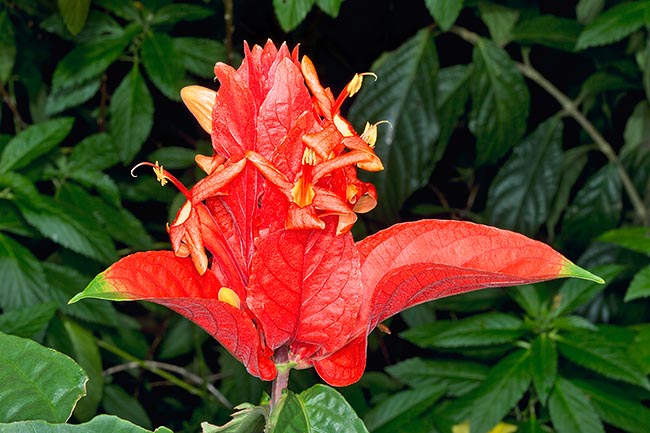Family : Acanthaceae

Text © Pietro Puccio

English translation by Mario Beltramini

Ruellia chartacea: showing papery bracts © Giuseppe Mazza
The genus is honoured to the French physician and botanist Jean Ruel (1474 ca. – 1537), author of a treatise titled “De Natura stirpium libri tres”, in which he reported all the botanical knowledge of the time; the Latin name of the species “chartacea” = chartaceous, papery, refers to the appearance of its showy bracts.
Common names: “colorama”, “lobster claw”, “fire shrimp plant”, “red shrimp plant”, “Brazilian flame tree” (English); “ruélia”, “ruélia-do-Amazonas”, “ruélia-vermelha” (Portuguese).
Evergreen shrub, tall up to 1,5-2 metres, with thin brown-grey stems and opposite elliptic, 15-18 cm long and 6-8 cm broad leaves, dark green on the superior page, and pale on the inferior one. The terminal inflorescences are formed by showy bright red bracts, long up to 9 cm, which persist for many months, in which interior do open orange-red tubular, 5-6 cm long and about 3 cm broad flowers, with a yellow throat. It easily reproduces by cutting.
Typically tropical plant due to its requirements, does not stand temperatures lower than +5°C; it likes better shady and humid locations and sub-acid or neutral soils. Cultivated in pot, it’s utilized for indoor decoration, in particular during Christmas time, when it’s blooming, as it is a short-day plant. Natives utilize the roots as anthelmintic and emetic.
Synonyms: Aphelandra chartacea T. Anderson (1864); Ruellia colorata Baill. (1890).
